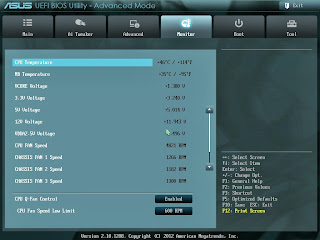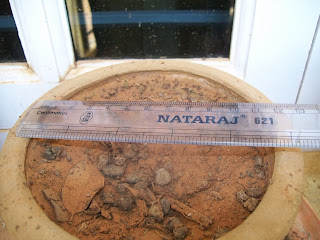UEFI BIOS Setting
Fast Boot : DISABLED
Secure Boot : DISABLED/OTHER OS TYPE
CSM(Compatibility Support Module)
Boot Device Control : UEFI and LEGACY, UEFI First
Boot From Storage Device : UEFI and LEGACY, UEFI First
GTP Partitioning of the DISK
UEFI Mandates this GTP partition table. GPARTED tool makes this partition happen.
http://gparted.org
http://en.wikipedia.org/wiki/GUID_Partition_Table
Download ISO burn to CD/USB. Boot up and setup the Partition below vi GPARTED Application.
Before doing the partition, you have to format the disk with GTP partition table via GPARTED.
400MB System Partition FAT32 as per the UEFI and GUID Partition Table Specifications. This has to be in the start of the disk. Make sure to set the BOOTABLE flag = true
250GB NTFS
30GB EXT4 for Linux root
4GB LINUX-SWAP
Apply/Commit all the changes to the disk.
BOOTING IN UEFI Mode
Most Important : Make sure to Boot the UBUNTU 13.04 CD in UEFI CD Boot mode. There shall be plain boot mode for the same CD. Careful in your selection.
More Info @
https://help.ubuntu.com/community/UEFI
Now boot up the UBUNTU 13.04 CD in UEFI mode.
400MB System partition has to be mapped to EFI PARTITION as File system during the UBUNTU installation. Rest of the Partition have be mapped for UBUNTU installation(ie root and swap).
After the installation and reboot,you shall see this layout below. GRUB2 is installed under EFI PARTITION which is mounted as /boot/efi
# df -kh
Filesystem Size Used Avail Use% Mounted on
/dev/sda3 30G 904M 28G 4% /
/dev/sda1 400M 132K 400M 1% /boot/efi
SHOW PARTITION TABLE
# gdisk
GPT fdisk (gdisk) version 0.8.5
Type device filename, or press <Enter> to exit: /dev/sda
Partition table scan:
MBR: protective
BSD: not present
APM: not present
GPT: present
Found valid GPT with protective MBR; using GPT.
Command (? for help): p
Disk /dev/sda: 3907029168 sectors, 1.8 TiB
Logical sector size: 512 bytes
Disk identifier (GUID): 7FE7EE77-D71C-48B5-B2EF-BEDA1B4C4C7E
Partition table holds up to 128 entries
First usable sector is 34, last usable sector is 3907029134
Partitions will be aligned on 2048-sector boundaries
Total free space is 1213466733 sectors (578.6 GiB)
Number Start (sector) End (sector) Size Code Name
1 2048 821247 400.0 MiB EF00 EFI Partition
2 821248 525109247 250.0 GiB 0700
3 2097973248 2160887807 30.0 GiB 0700 Dom0 root
4 2160887808 2169276415 4.0 GiB 8200
Command (? for help): i
Partition number (1-4): 1
Partition GUID code: C12A7328-F81F-11D2-BA4B-00A0C93EC93B (EFI System)
Partition unique GUID: 97D85749-AEAF-4767-95D0-1AAA2905FA3C
First sector: 2048 (at 1024.0 KiB)
Last sector: 821247 (at 401.0 MiB)
Partition size: 819200 sectors (400.0 MiB)
Attribute flags: 0000000000000000
Partition name: 'EFI Partition'
ALL THE AVAILABLE PARTITION TYPES
Command (? for help): l
0700 Microsoft basic data 0c01 Microsoft reserved 2700 Windows RE
4200 Windows LDM data 4201 Windows LDM metadata 7501 IBM GPFS
7f00 ChromeOS kernel 7f01 ChromeOS root 7f02 ChromeOS reserved
8200 Linux swap 8300 Linux filesystem 8301 Linux reserved
8e00 Linux LVM a500 FreeBSD disklabel a501 FreeBSD boot
a502 FreeBSD swap a503 FreeBSD UFS a504 FreeBSD ZFS
a505 FreeBSD Vinum/RAID a580 Midnight BSD data a581 Midnight BSD boot
a582 Midnight BSD swap a583 Midnight BSD UFS a584 Midnight BSD ZFS
a585 Midnight BSD Vinum a800 Apple UFS a901 NetBSD swap
a902 NetBSD FFS a903 NetBSD LFS a904 NetBSD concatenated
a905 NetBSD encrypted a906 NetBSD RAID ab00 Apple boot
af00 Apple HFS/HFS+ af01 Apple RAID af02 Apple RAID offline
af03 Apple label af04 AppleTV recovery af05 Apple Core Storage
be00 Solaris boot bf00 Solaris root bf01 Solaris /usr & Mac Z
bf02 Solaris swap bf03 Solaris backup bf04 Solaris /var
bf05 Solaris /home bf06 Solaris alternate se bf07 Solaris Reserved 1
bf08 Solaris Reserved 2 bf09 Solaris Reserved 3 bf0a Solaris Reserved 4
bf0b Solaris Reserved 5 c001 HP-UX data c002 HP-UX service
ef00 EFI System ef01 MBR partition scheme ef02 BIOS boot partition
fd00 Linux RAID




























































